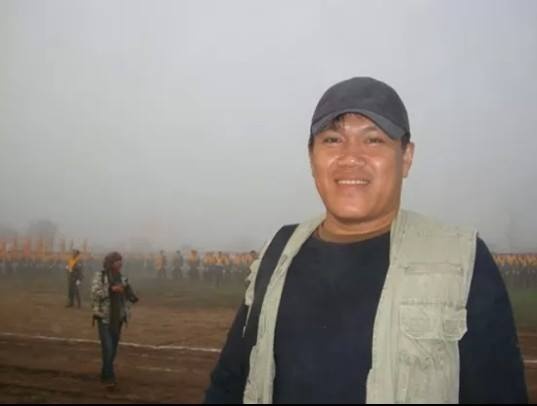An official inquiry into the death of freelance journalist Par Gyi says that he died from gunshot wounds to the head, chest, thigh and heel, but that there is no evidence that he was subjected to physical or mental torture.
The Myanmar National Human Rights Commission (MNHRC) on Tuesday filed a report to the Burmese president with the results of its investigation, which concluded with a recommendation that a civilian court trial be held to ensure transparency.
Sitt Myaing, the secretary of the MNHRC and head of the probe into Par Gyi’s death, said the report, dated 2 December, took one month to finalise and included testimonies from 47 witnesses.
“We have submitted the report to the president. It took us one month to prepare, during which time we conducted 90 interviews with 47 witnesses,” said Sitt Myaing. “Fundamentally, we suggest an open trial in a civilian court to ensure [Par Gyi’s] rights provided by Article 347* of the Constitution.”
According to the MNHRC report, no conclusion could be reached on whether Par Gyi was a member of the Democratic Karen Benevolent Army (DKBA) or a member of the press, due to a lack of evidence. The report noted, however, that the Myanmar Journalist Association deputy-chair and a local reporter in Hpa-an had testified that Par Gyi was working as a freelance reporter.
Robert San Aung, a high-profile Burmese lawyer who has been assisting Par Gyi’s family in the case, rejected the MNHRC’s findings.
“The report said there is no evidence of torture, but the autopsy report states that he suffered from broken ribs and a broken leg,” he told DVB on Tuesday. “It is completely impossible someone would sustain those injuries unless he was tortured.
“The report said there is no evidence of torture and we cannot accept that.”
[related]
Par Gyi’s widow, Ma Thandar, said, “Only on the last page of the report does it mention that citizen’s rights, as provided for by the Constitution, should be protected. It barely mentioned human rights.
“Instead, the first 10 pages of the 16-page report are about the fighting in Kyeikmayaw, which is completely irrelevant to Ko Par Gyi’s case. It baffles me as to what the MNHRC is trying to say in its report.”
The MNHRC pointed blame at the Kyeikmayaw police for not filing a report about Par Gyi’s arrest in October and at the Burmese military for not completing an investigation into whether Par Gyi was a rebel soldier with the DKBA.
On 30 October, Burmese President Thein Sein assigned the MNHRC responsibility to investigate and compile and report on Par Gyi’s untimely death.
Par Gyi was a political activist and a member of Aung San Suu Kyi’s personal security team during the 1988 uprising. He was also one of the first National League for Democracy Youth members and acted as the group’s Karen State coordinator. After his involvement in the 1988 uprising, Par Gyi was forced into exile in Thailand and began working as a freelance journalist under the pseudonym “Aung Naing.”
His wife Ma Thandar spent several weeks looking for her lost husband after he went missing in late September, until the military issued a report on 23 October which said the Burmese army killed him due, in part, to his involvement with the DKBA.
The Burmese military has maintained that Par Gyi was detained as a rebel soldier, and that he was shot when he tried to wrestle a gun from a guard before attempting to escape.
*Article 347: The Union shall guarantee any person to enjoy equal rights before the law and shall equally provide legal protection.



